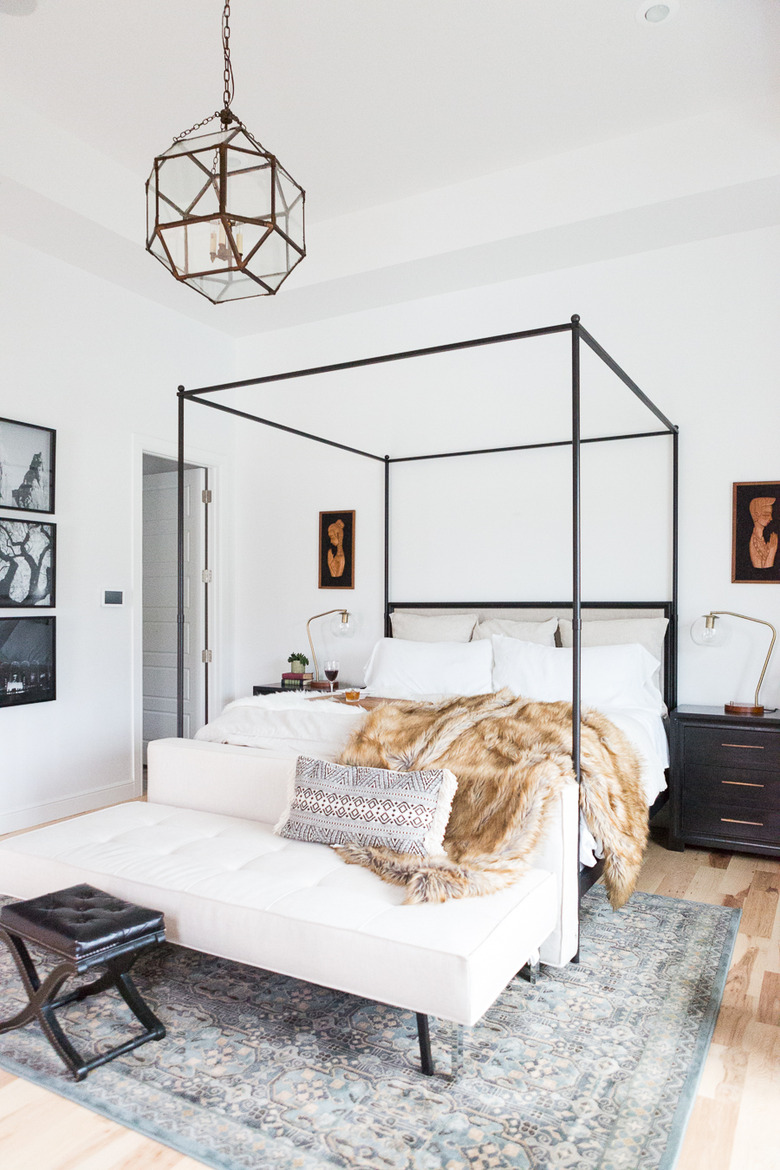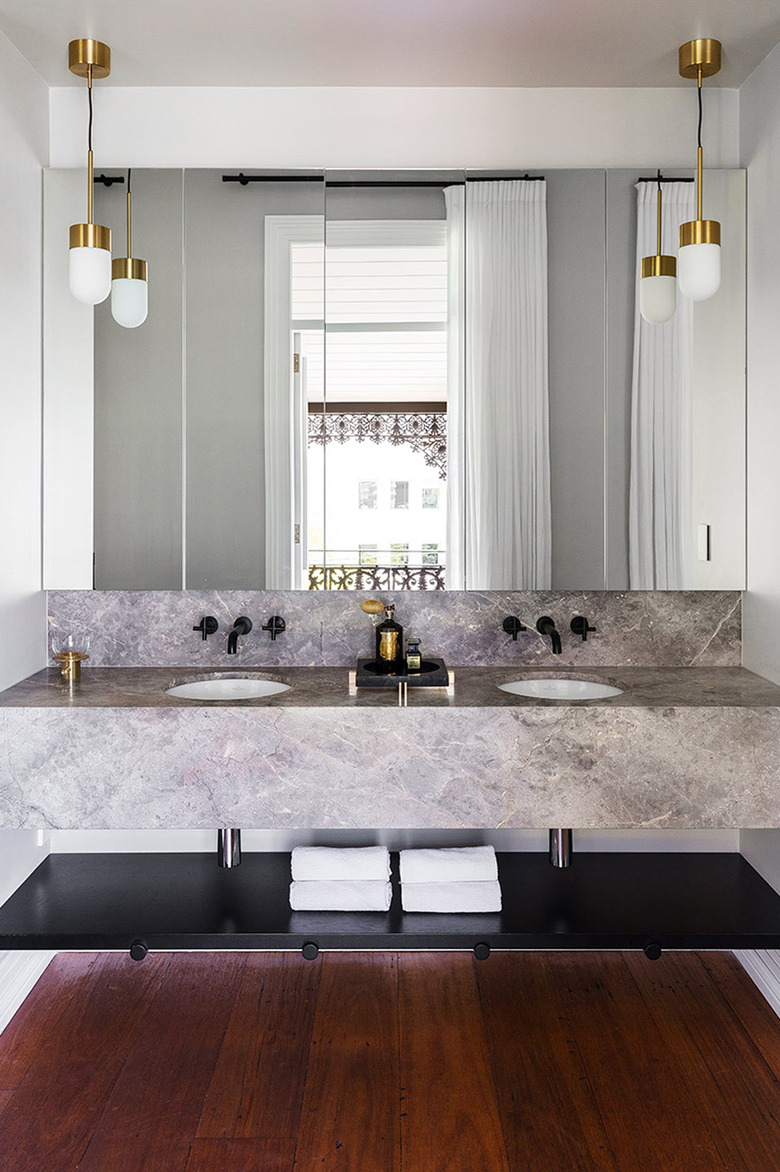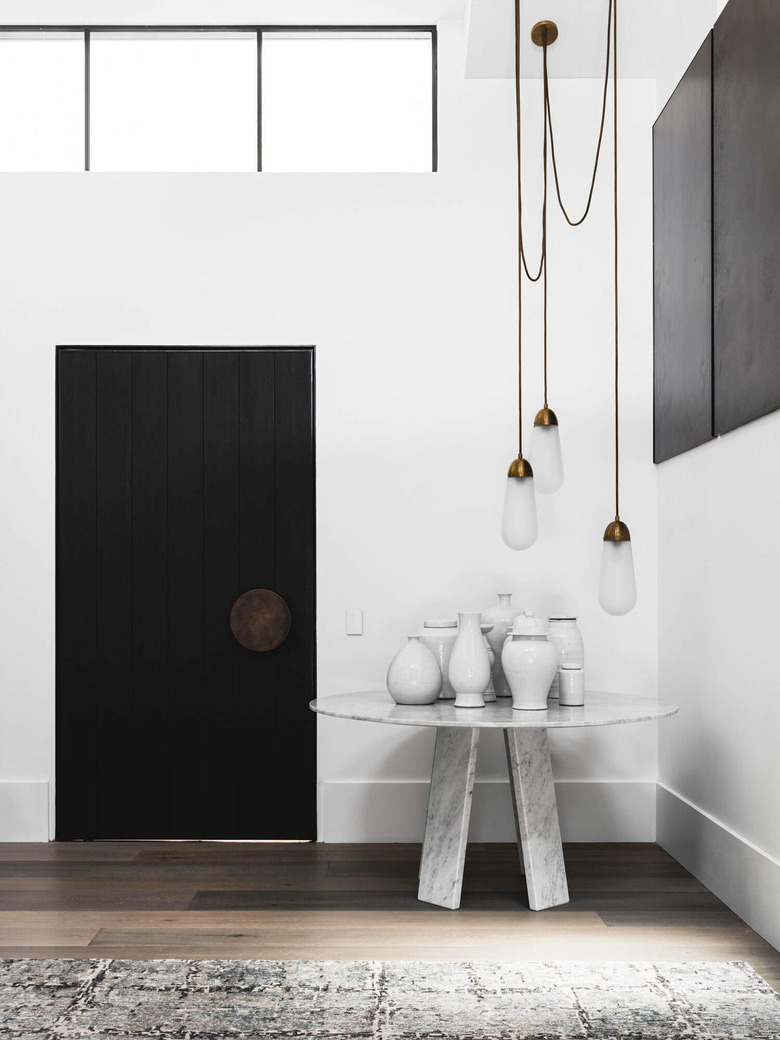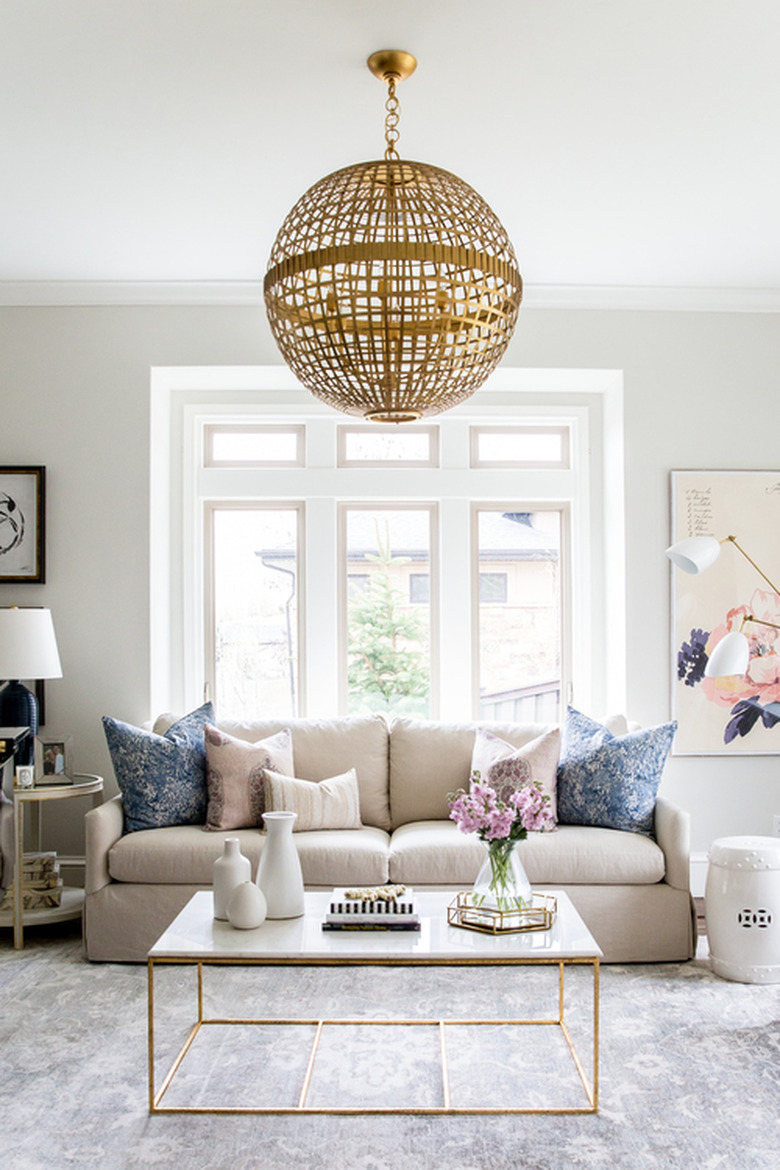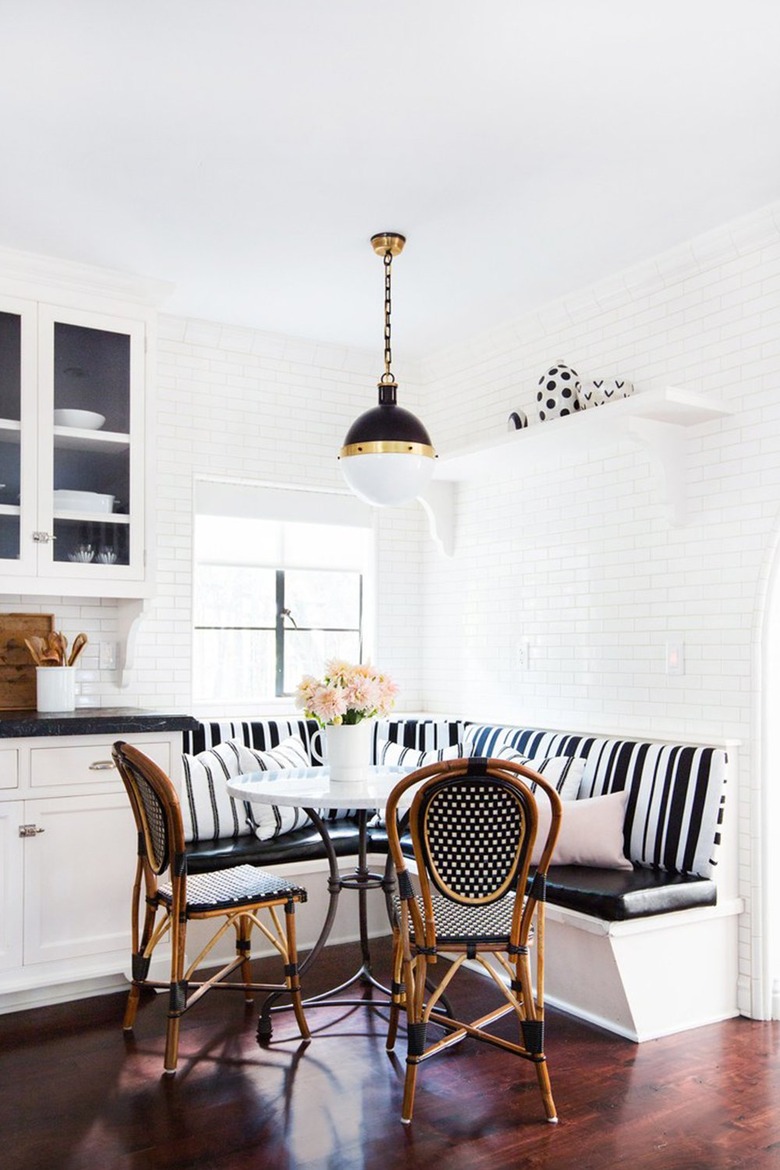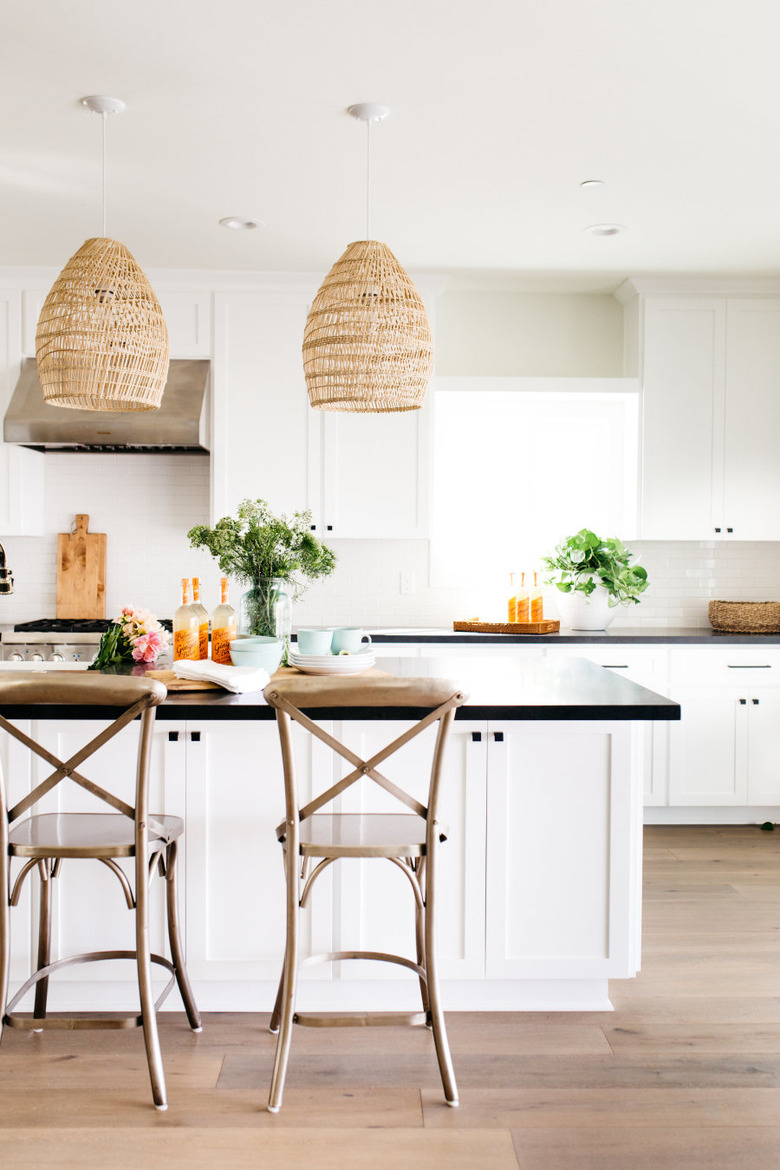How To Choose The Right Type Of Pendant Lighting
Pendant lighting can be a powerful tool in your home decor arsenal — if you know how to choose the right fixture, that is. What works for your living room might not work for your bedroom, and vice versa, but choosing the right pendant light is based on more than 'what works where.' Selecting the right fixture will mean thinking about cost, style, ceiling height, and more. When you see that picture perfect pendant-lit room in your mind's eye, you can make your final decision with confidence knowing that you've considered all of the practicalities. To ensure you've covered your bases, take a gander at our six-step cheat sheet before you hit the stores.
1. Start by establishing the purpose of your pendant light.
1. Start by establishing the purpose of your pendant light.
First things first: Ask yourself, what is the purpose of this light? Is it a snazzy fixture that will add a little extra accent lighting to your foyer, or do you need direct lighting above your kitchen island to ensure each and every dish is a culinary masterpiece? Once you decide whether this pendant light is providing task or ambient light, you can narrow down your search considerably.
2. Evaluate which pendant type would work best for your needs.
2. Evaluate which pendant type would work best for your needs.
Now that you know the purpose of your light fixture, you can determine which type of pendant light is up for the task. Popular types of pendant lighting include drums, globes, lanterns, and bell-shaped pendants to name a few. Since they're fully shaded, drums tend to be a great option for ambient light, while bell-shaped fixtures are usually a fantastic choice for task light.
3. Determine the size and number of pendants you will need.
3. Determine the size and number of pendants you will need.
Your pendant light quantity and scale depends entirely on their function and where you plan to install them. If you're thinking about hanging multiple drop pendants, remember that your design objective is to achieve balance. You want to strike a visual balance between the pendants, as well as between the light fixture arrangement and the room itself. Going big can work if you're only hanging one pendant, but if you're hanging multiples, bigger is not better. A good idea would be to measure your space to ensure you have enough room for the arrangement you have in mind. You can even use blue painter's tape to delineate where the fixtures would go, giving you a better idea of the size and spacing.
4. Don't forget to measure your ceiling height.
4. Don't forget to measure your ceiling height.
Even if you're not planning on installing the fixture yourself, it helps to know the ceiling height when choosing a pendant light. You'll want to keep this measurement handy while shopping for your lustrous decor, so you know if you should be looking for pendants with a short drop or if it can be a bit longer. You also want to think about whether the fixture will be suspended above another surface, like a countertop or a desk, as well as whether or not there are any door swings that you need to consider. There is nothing worse than installing a beautiful pendant light, only to realize that now you can't close the bathroom door.
5. Ponder the ease or difficulty of installation.
5. Ponder the ease or difficulty of installation.
When it comes to any light installation the best rule of thumb is to call a professional if you have any doubts or questions. That said, there are some pendant lights that make a pretty easy DIY project; but always put safety first. If you've got the requisite know how to DIY, we definitely recommend that you stick to swag kits, and leave the hard-wiring to the pros. Regardless of whether you install, or someone else more qualified does the heavy lifting, it is still prudent to consider how difficult the installation process might be — especially since it will impact the invoice you receive from the electrician. Besides, you're going to have to change the lightbulbs, eventually.
6. Reflect on how the pendant style will mesh with the rest of the room's decor.
6. Reflect on how the pendant style will mesh with the rest of the room's decor.
And we've saved the best for last: After you've gone through all of the above listed steps, and you've narrowed down your pendant lighting options, it's time to have a little fun. Of course your pendant light needs to be functional, but that doesn't mean it can't look good while doing its job. For now, put those practical considerations aside and remember, balance continues to be the name of the game — your pendant light's beauty should accent and complement the rest of your well-thought out decor. Look for stunning options that will blend effortlessly with your design and illuminate your oh-so chic space in all the right ways.

